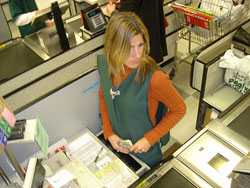 According to the Wall Street Journal, last year consumers spent more than $3.1 trillion on retail purchases. Plus, 89% of sales in the clothing industry were made in stores compared to online. Where online shopping continues to grow, these stats show that, even today, the majority of retail spending still occurs in brick-and-mortar stores. This means in-store shopping is still very relevant.
According to the Wall Street Journal, last year consumers spent more than $3.1 trillion on retail purchases. Plus, 89% of sales in the clothing industry were made in stores compared to online. Where online shopping continues to grow, these stats show that, even today, the majority of retail spending still occurs in brick-and-mortar stores. This means in-store shopping is still very relevant.
Offline and online competition, however, is growing massively. This is exactly why it has become more important than ever for retailers to attract customers passing by their storefronts.
Importance of an Enticing Storefront Display
Your storefront display is the first physical encounter your business has with your potential buyers therefore it should be impactful, impressive and enticing.
Storefront display:
- Is a valuable tool for marketing your business, because customers are able to see what you have to sell.
- Improves business visibility.
- Helps attract walk-in customers to the store and encourages them to purchase, thereby resulting in more sales.
- More importantly, if your storefront display makes a great first impression on people, they are more likely to shop at your store instead of competing stores.
Clearly, storefront displays are definitely a tool that retailers looking to maximize in-store sales should consider.
How to Create an Impressive Storefront Display to Attract Walk-in Customers
Here are some proven tips to create an impressive storefront and become the go-to retailer:
- Signage: Do you have signage? Is it visible to both foot and vehicle traffic? Your retail signage must be visible with appropriately sized lettering that is large enough to be read from a distance. These types of outdoor signs for business make it easier for people driving and passing by to spot your store, helping your business stand out from others in the same line. Studies show that impressive signs attract half of a start-up business’s customers.
- Decorate Your Storefront with a Storyline or a Theme: Your storefront functions like a billboard, so make sure you use it wisely to advertise your business. Determine a central theme and a story line to optimize your storefront display. For example, if you sell clothes, you can choose a winter theme to showcase your winter collection. You can change the display theme according to the season and make it more appealing for customers.
- Avoid Clutter: A storefront display to attract customers doesn’t mean you clutter the area and display everything from the store. Only display the latest items or most popular products, rather than creating a cluttered mess of various displayed products. By showcasing the latest and popular products in-store, you can easily attract passing by potential customers. If you display everything, it will be confusing for the customers and some will pass by.
- Hire a Skillful Sales Person: You can also hire a skillful sales person who has excellent marketing skills to lure people inside the store. Make sure, however, s/he doesn’t sell too aggressively, as that can also turn potential customers away.


